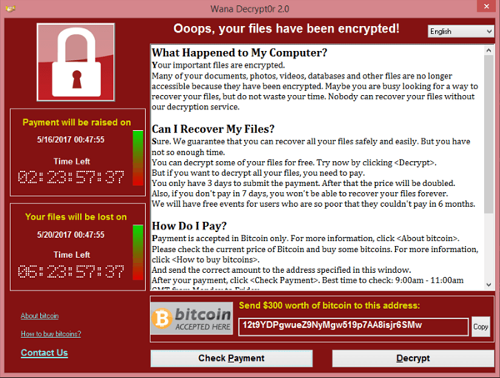Technology moves fast and sometimes it can be hard to keep up with all the latest developments in software and hardware. It's very important to stay up-to-date however, and today we'll look at why that is.

Security
It seems that every other day the media is reporting another new data breach or major security flaw in a widely-used product. Just recently, the NHS, FedEx, Telefónica and many more (230,000 computers in over 150 countries) were hit by the WannaCry (also known as WannaCrypt) ransomware attack. The attack vector used had actually been patched months previously in Windows 10, making up-to-date Windows systems invulnerable to the particular exploit being used. The systems used by the NHS however were anything but up-to-date. Keeping systems secure is the single most important reason to stay up-to-date.
The latest features
Security is not the only argument for updating your software however. New versions bring new capabilities and features to your software. Using the latest version of Microsoft's or Mozilla's web browsers for example will deliver a vastly superior experience to viewing the same websites in very old versions of Internet Explorer or Firefox, where many modern web pages would be poorly-presented and potentially contain broken functionality.
In addition to delivery of new features, addition of new integrations and support of new standards, software developers may use updates to iron out annoying bugs (crashes, awkward glitches you need to work around, etc), improving the quality of the software and making your life that bit easier.
Hardware
It's not just your software that should be kept up-to-date - your hardware should also be upgraded periodically. There's certainly no need here to believe the manufacturer hype that each year's new revision of their lineup is some revolutionary breakthrough that overnight renders their previous models obsolete.
Performance of processor cores has increased at a fairly glacial rate over the past eight years. Energy efficiency however has improved considerably, potentially reducing your ongoing energy costs, and those tiny incremental performance increases do gradually add up. For these reasons, we tend to advise a three-yearly upgrade cycle (in line with industry standards).
It's not just server hardware either - even something like a router or firewall can become obsolete over time, falling behind as the latest versions of the software they run drop support for older models, coming back to the risks of unpatched security flaws. Additionally, not all hardware is built to last and over time, performance and reliability issues may manifest themselves.
What can you do?
If you're running Windows 10, your system should automatically keep itself updated. For Windows 7 and 8.1 systems, ensure Windows updates are enabled and if not installed automatically, be sure to check and install pending updates periodically. Windows 8 systems should be updated to 8.1, as 8 is no longer supported with updates. Other modern software can generally be updated from within the application - check the 'about' option in the help menu if you're not prompted at startup to update.
For hardware upgrades (and for many other things too), we can help.
To learn more about our services and what we can do for you, call us on +44(0)207 100 666 8 or email us at hello@thenetworkfactory.com and we'll find a dependable, cost-effective solution that works for you.

